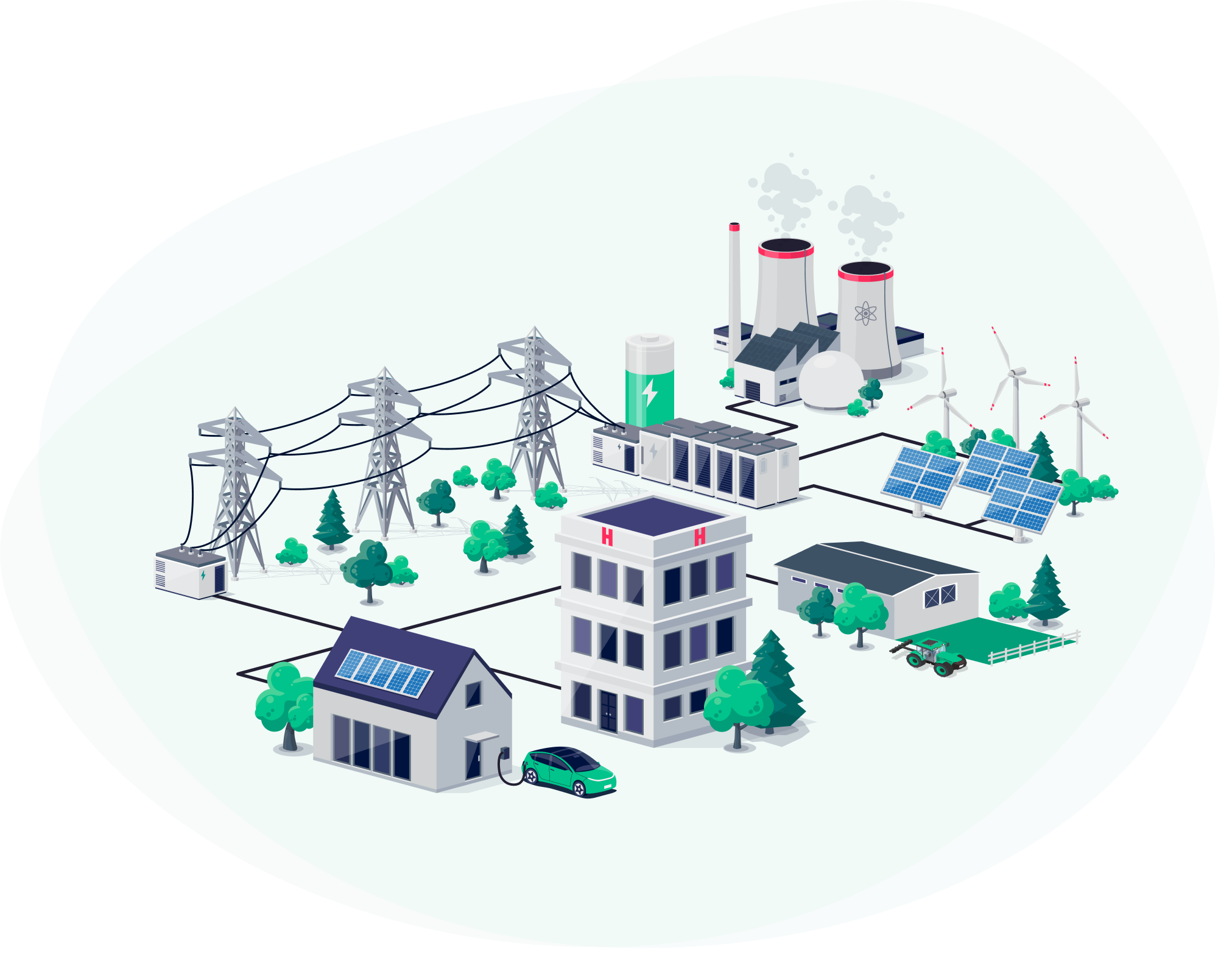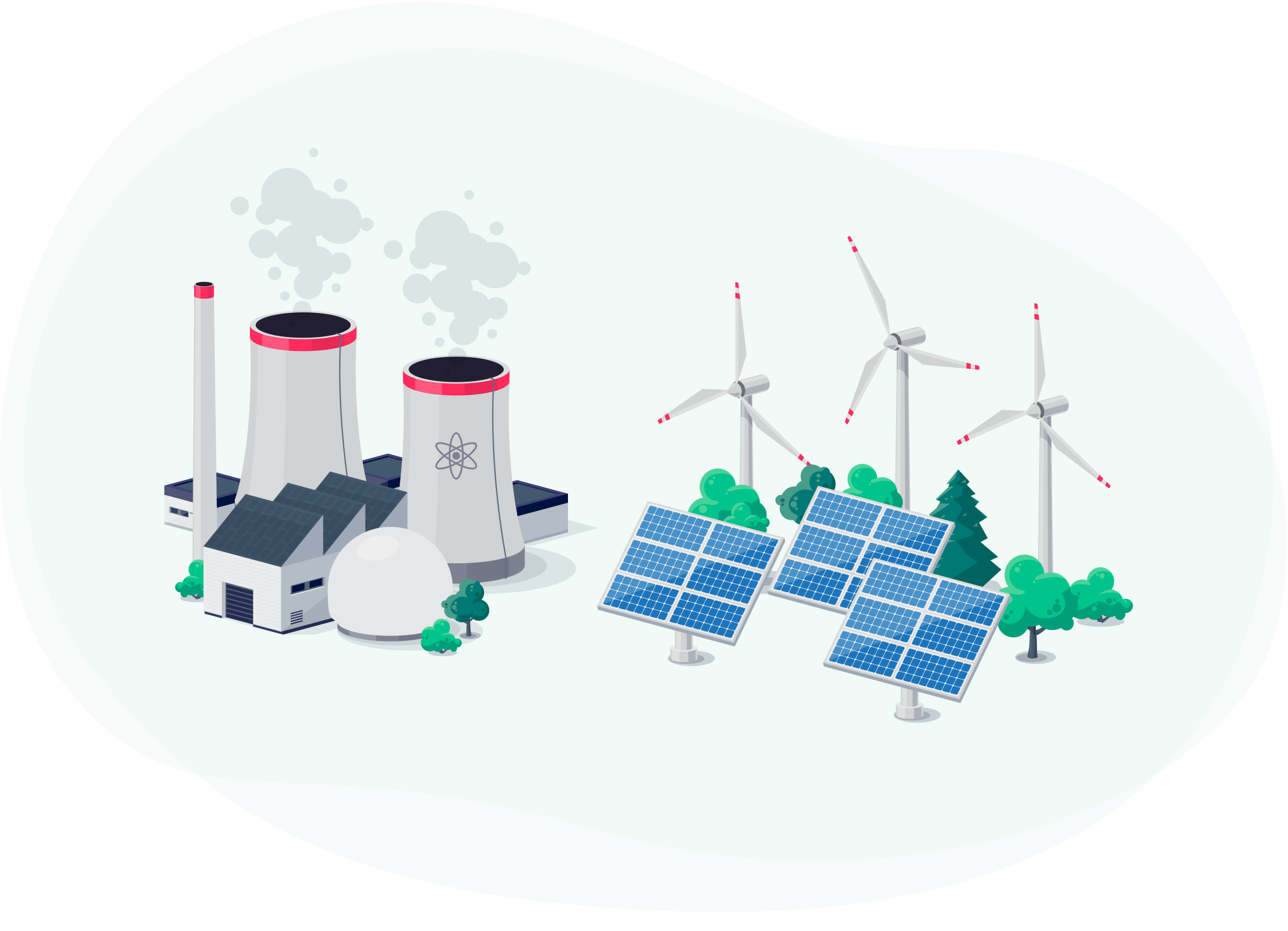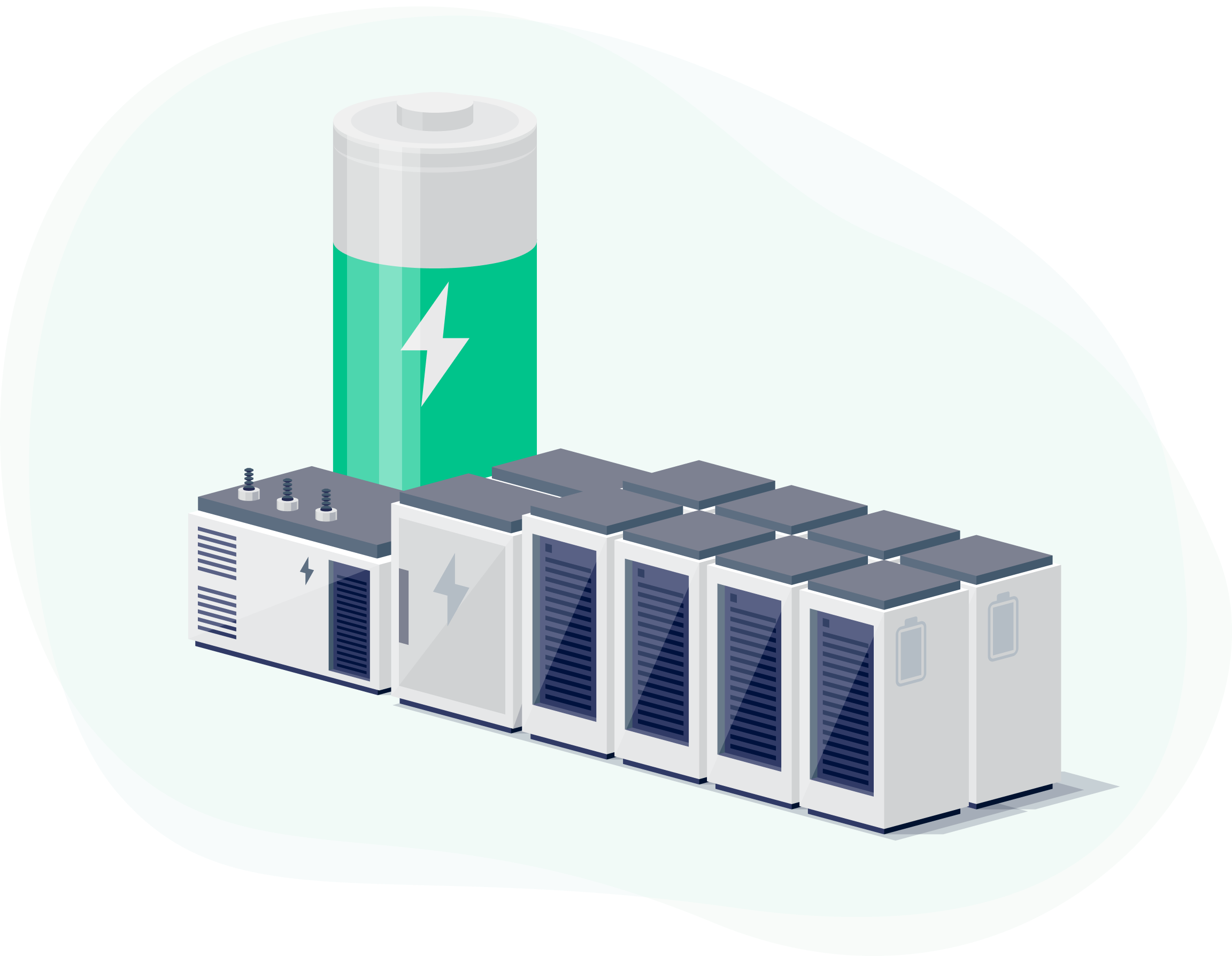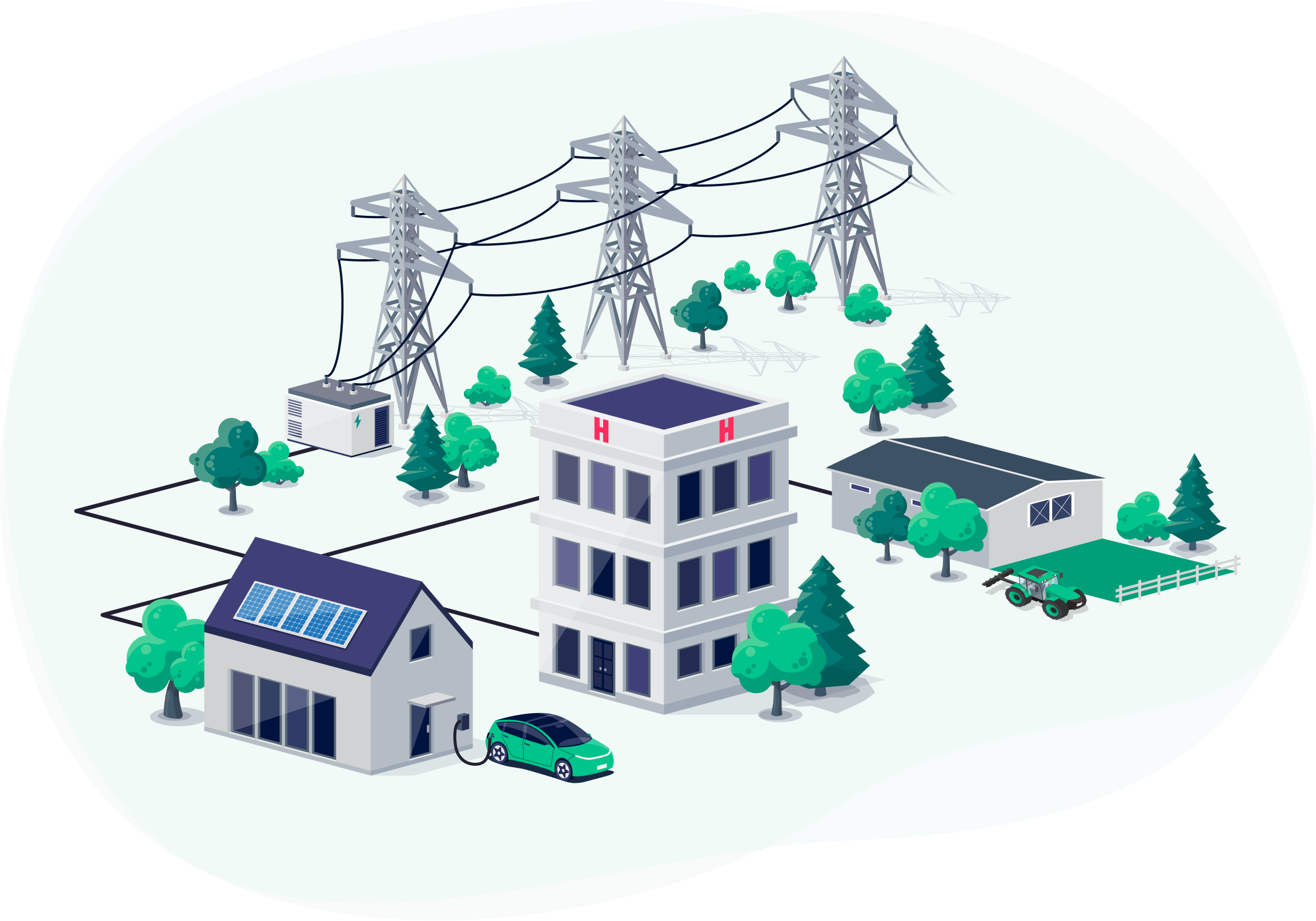Battery Energy Storage Systems help deliver safe, affordable, and reliable energy.
An established, climate-friendly energy solution, Battery Energy Storage Systems (BESS) are a key technology in helping usher in the clean energy transition and meeting increasing energy demand across North America.

What is BESS?
Battery Energy Storage Systems are crucial to meeting Ontario’s energy demand for years to come.
By safely capturing and storing electricity at off-peak hours and releasing the stored energy back onto the grid during peak hours, we can be sure that homes, businesses, schools, hospitals, and more have the power they need when they need it most.

Powering a Cleaner, Reliable Energy Future
Proven battery energy storage technology supports renewable energy from solar, wind, and nuclear generation by storing provincial electricity when it’s not needed and releasing it when consumers need power most – helping eliminate emissions by reducing our reliance on natural gas generation.
With energy demand expected to grow by 75 percent by 2050, provinces like Ontario need the storage resources that can safely and reliably meet our clean electricity needs when demand is high.
Modern, Safe, and Essential
Battery Energy Storage has been used across North America – including in Ontario – for decades as an established solution for our energy needs. As our energy demand increases, this modern, more innovative technology is helping power our daily lives.
BESS facilities are designed with safety in mind and ensure communities stay safe. These facilities include:
- Design and installation to meet the National Fire Protection Association's (NFPA) standards for fire prevention, detection, and response in energy storage systems and extensive training for local fire departments and emergency services.
- State-of-the-art battery technology provides enhanced safety compared to legacy systems built before the adoption of the 2020 NFPA standards, which established stricter fire protection and energy storage safety requirements. These advancements include improved thermal management, fault detection, and containment measures. The technology is also environmentally friendly, free of toxic materials like cobalt, and designed for responsible decommissioning at the end of its operational life.
- BESS facilities meet the latest standards of safety and innovation to ensure secure facilities. BESS use a variety of methods to ensure that sites are safe and secure including perimeter fencing, alarm systems, 24/7/365 video surveillance, and more.


Energy Storage Benefits Everyone
BESS facilities help residents power their homes, farms, businesses, and critical infrastructure when they need power the most.
By taking action to respect and restore previous land use including prime agricultural land, reducing noise, incorporating large setbacks and extensive screening from residential areas, using a separate water supply, and investing in community programs, BESS projects benefit the whole community.
What to Know
Does a BESS project change the day-to-day for nearby residents once installed?
During operations, BESS facilities generate minimal traffic, with fewer trips per day than a single-family dwelling. They are also often sited near suburban and rural areas with setback distances tailored to site-specific considerations and designed to preserve the local landscape and heritage through working directly with the municipality.
Do BESS facilities have an environmental impact on local areas?
Battery energy storage supports national and regional net-zero targets. BESS facilities enable green energy sources like nuclear, solar, and wind generation to store energy and distribute it when needed to power a more sustainable future.
Each BESS project must pass strict environmental permitting and approval phases before development. Using modern innovation and technology, BESS operators are able to preserve local ecosystems including ground water and agricultural soil.
Locally, BESS projects minimize impact on the environment during construction by reducing the project's footprint, stripping topsoil and subsoil and stockpiling it for use during land rehabilitation, and providing agricultural education to all construction and maintenance personnel to ensure all activities are respectful of local land use.
Will a BESS facility put a strain on municipal resources?
BESS facilities are designed to have their own water supply system and operate independently from a municipality’s water supply. To support with emergency response, BESS operators work with municipal councillors, staff, and local fire departments to have an extensive safety plan in place.
These plans integrate fire safety standards, as well as partnering with local emergency services on extensive training for local fire departments and emergency services in the event of an emergency.
How safe are Energy Storage Systems?
Modern energy storage systems are built with safety as the top priority. Systems follow all national and local codes and standards, such as NFPA 855 and UL 9540, to ensure that installations meet strict building, fire, and zoning requirements.
Each project has an emergency response plan developed with local fire officials and independent safety experts. This plan includes measures to prevent fires, control any that occur, protect lives and property, and quickly address issues. In addition, these systems feature redundant, fail-safe mechanical systems, and are monitored 24 hours a day, 7 days a week by a remote operations center.
What are the Expected Benefits of Energy Storage Projects?
Energy storage projects help stabilize the power grid, reducing the risk of outages and ensuring a reliable energy supply. They also provide significant economic benefits by generating tax revenue that supports community investments and by creating local construction jobs that boost employment.
How do Modern BESS Systems Enhance Safety and Minimize Risks?
Modern battery systems are designed to handle even the rarest incidents, such as thermal runaway, in a controlled manner to prioritize public health and safety. They achieve this by:
Containing Thermal Events
Battery enclosures undergo rigorous testing (e.g., UL 9540A fire tests) and include cooling and gas detection systems to stop fires from spreading.
Eliminating Flammable Materials
Newer battery technologies, like LFP, generate fewer volatile gases compared to older types.
Preventing Pressure Build-Up
Special venting systems safely release gases to prevent dangerous pressure accumulation.
24/7 Monitoring & Emergency Coordination
Continuous remote monitoring detects early warning signs, such as heat build-up or gas release, enabling operators to intervene promptly. Local fire departments are also trained in emergency response procedures specific to these systems.
What are NFPA Standards?
NFPA standards are internationally recognized guidelines established by the National Fire Protection Association to protect people by reducing fire and other hazards. One key standard, NFPA 855, specifically addresses the installation of battery energy storage systems and is regularly updated to reflect new technology, safety research, and lessons learned from past events.
What Makes Lithium Iron Phosphate (LFP) a Preferred Battery Chemistry?
Lithium Iron Phosphate, or LFP, is a type of lithium-ion battery known for its enhanced safety and reliability. Its chemical design provides greater stability, making it less prone to overheating and reducing the risk of dangerous reactions. This robust chemistry also contributes to a longer battery lifespan, making LFP a popular and safe choice for energy storage applications.